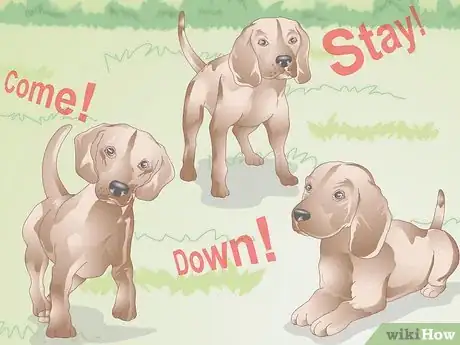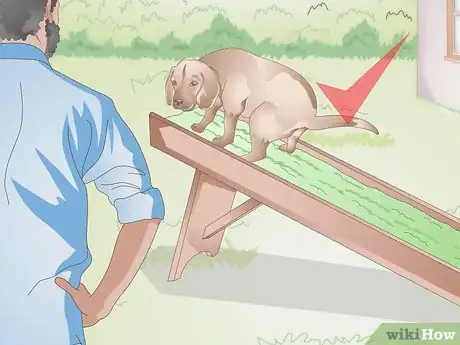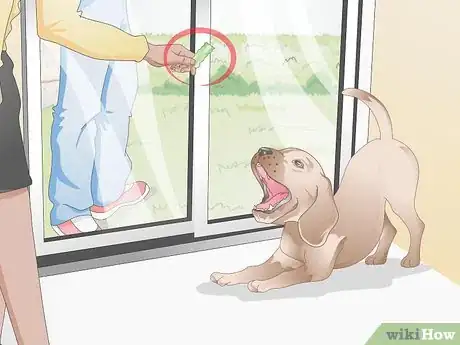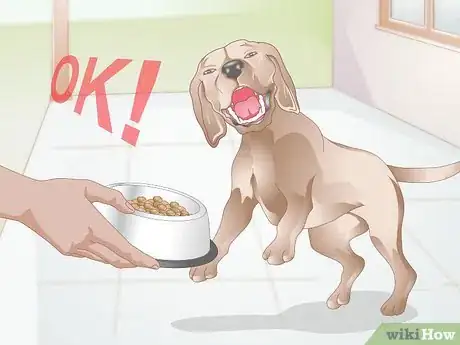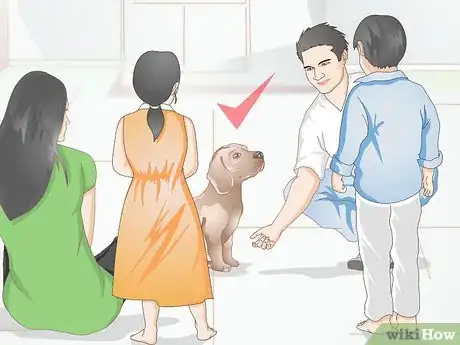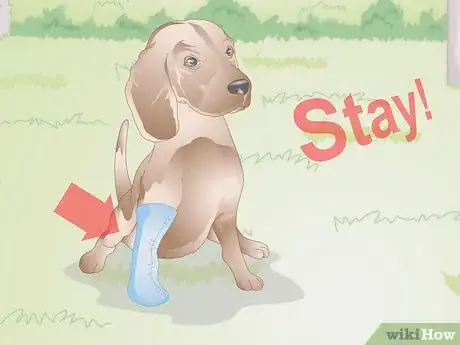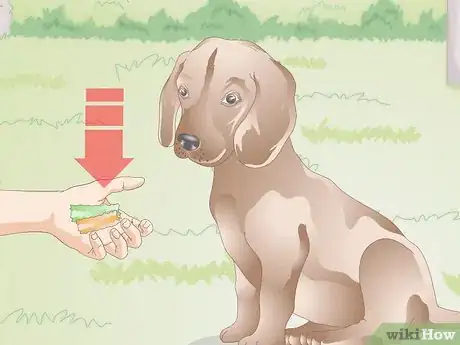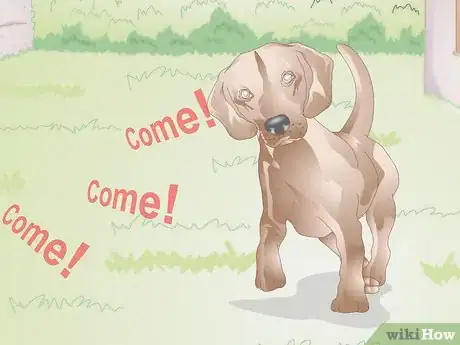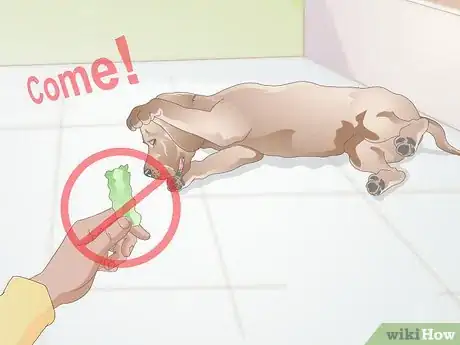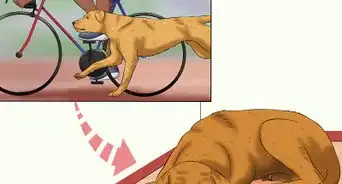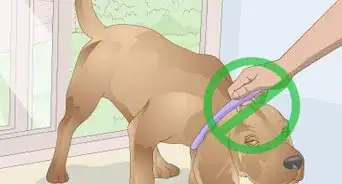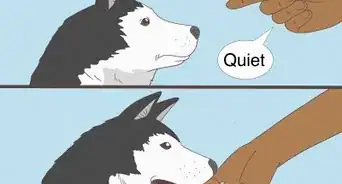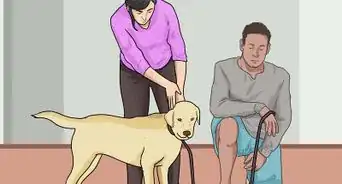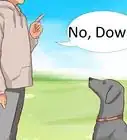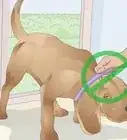This article was co-authored by Ty Brown. Ty Brown is a Dog Behaviorist and Trainer and the Owner of Ty the Dog Guy, a business that provides dog training through digital resources (podcasts, web series, and online courses) along with in-person dog training. Ty has over 17 years of experience in dog training and specializes in both mitigating unruly pet behavior and service dog training. Ty has been awarded the "Best of State Award" for dog training in Utah ten times and his work has been featured in ABC, NBC, CBS, Spike TV, and Entrepreneur Magazine.
There are 7 references cited in this article, which can be found at the bottom of the page.
This article has been viewed 26,089 times.
Contrary to popular belief, it is possible to teach an old dog new tricks. You can train an older dogs just like puppies. The only difference is that it may take an older dog longer to learn new commands. As a result, you need to be consistent and patient with your training techniques. Always use positive reinforcement and avoid becoming impatient or frustrated with your dog.[1] Another key part of training an older is correcting bad habits that may have developed and identifying possible health issues that prevent your dog from following certain commands.
Steps
Helping Your Older Dog Learn Basic Commands
-
1Use positive reinforcement. Your older dog will be more motivated to continue learning new commands throughout its life, if you use a positive rewards-based method. Training with verbal or physical punishment can scare your dog and make training sessions less fun. You can teach a variety of basic commands, such as “sit”, “down”, “stay”, and “come” to an older dog by using positive reinforcement.[2]
- For example, teach your dog to “sit” by holding a treat in your hand in front of the dog. Then raise your arm up, causing your dog’s head to rise and bottom to lower to the ground. Say “sit” and then give the dog the treat.
- You can also gently push your dog's bottom to the floor if they need extra guidance.[3]
- Repeat this exercise daily until your dog has mastered the command.
-
2Teach your dog basic commands. The four most important commands to teach your dog are "sit", "down", "stay", and "come." Always use a treat as a lure to help the dog perform the command and then provide them with lots of praise afterwards. Here are a few tips for teaching these commands:
- To teach “come”: Put your dog on a leash and crouch down to its level. Say “come” and then gently pull the leash. When the dog gets to you, reward it with praise and a treat. Repeat with a leash until they understand the command without the pull. Then practice from further distances without a leash.[4]
- To teach “down”: Hold a treat in front of your dog’s nose. Then move your hand down to the ground so the dog follows, and then slide the treat across the floor so the dog extends into a laying down position. Once in the position, say “down” and give the dog the treat.
- To teach “stay”: Put the dog in a sitting position. Then hold your hand out in front of you, like a stop sign and say “stay”. Then take a step back. If the dog stays seated praise it and give it a treat. Repeat this and continue to increase the distance.
Advertisement -
3Set aside training time daily. In order to teach an adult dog basic commands, you will need to set aside a few hours each day to work on training. Older dogs, unlike puppies, can concentrate and focus for longer, however, they do not learn as quickly. As a result, you will need to be patient and consistent with your training. Do not get angry or frustrated with your dog and always keep training sessions positive and fun.[5]
- Only work on one or two commands during a training session.
- Always conclude training on a positive note. For example, if they are struggling with the “stay” command end the session with a command they have already mastered, like “sit”.
-
4Try obedience classes. Formal obedience classes are not just for puppies and they are an excellent way to teach your dog basic commands, especially if you have never trained a dog before. They also provide your dog with an opportunity to socialize with other dogs and people in a controlled and safe environment. If your adult dog has never had any formal training, then you should start with a beginner level obedience class.[6]
- Obedience classes will provide your adult dog with mental stimulation.
- They provide an opportunity for you to bond with your dog. This can be especially important if you have adopted an adult dog.
- Search online to locate a dog training school in your area.
Correcting Bad Behaviours in Older Dogs
-
1Put problem behaviours on cue. Many dogs will develop bad habits throughout their life, such as excessive barking or jumping up on people. These behaviours can often interrupt obedience training. A major part of training an older dog is actually correcting bad behaviours. One way to do this, is to put problem behaviours on cue. For example, teach your dog to bark and stop on command. Try this technique:[7]
- Say the command “speak” then have a family member or friend ring the doorbell. This will likely cause your dog to bark.
- To get your dog to stop barking, say the command “shush” and wave a treat in front of its nose. In order to sniff the treat, the dog will have to stop barking.
- Once it has stopped barking praise the dog and give it the treat.
- Repeat this training until they associate the commands “bark” and “shush” with treats.
-
2Use basic commands to stop problem behaviour. If your dog always jumps up on people when they enter the house or is aggressive at meal time, you will want to modify these behaviours. One way to do this is to stop the bad behaviour and replace it with a basic obedience command. For example, once your dog has learned to sit, you can tell them to sit when someone enters the house. They will not be able to jump up if they are sitting.
- Alternatively, you could tell your dog to sit and stay while you get out their food. Then once you are ready say "ok" and let them eat.
- These types of commands will help to solidify your position as the leader in the household.
-
3Ensure that all family members are engaged with training. When changing behaviours in an older dog, consistency and patience are very important. To ensure that your dog gets the consistency they need, make sure that all members of the family are engaged in the training and using the same command words. For example, if you are saying “shush” to stop the dog from barking, but another family member says “quiet” this will confuse the dog and slow down the training.
- Be patient. It will take a lot longer to change bad behaviours that have been accepted or reinforced for years.
Taking Health Issues into Consideration
-
1Change commands if your dog has mobility issues. You may find that your older dog is struggling to learn some of the basic commands, such as sit or lie down. This may be a result of mobility issues, such as hip dysplasia or arthritis. The dog is not following the command because it is too painful. If your dog has mobility issues, you may need to modify training to avoid painful positions. For example, work on the “stay” and “come” commands, instead of “sit”.[8]
-
2Modify training if your dog is deaf. Older dogs may also suffer from hearing loss, which makes vocal commands impossible to teach. Do not give up on training, instead, try using hand signals to teach your older dog basic commands.[9]
- For example, teach your dog to sit using a hand signal. Simply place a treat in your hand, stretch your arm out in front of you (palm facing up) and then move your arm downwards to the side of your leg.
- At first you may need to give the signal and physically adjust your dog into a sitting position.
- Once sitting, give the dog a treat. Repeat this until the dog learns the signal command and no longer needs to be adjusted.
- You can teach other hand signals either by following standard dog obedience commands or by following American Sign Language commands.
-
3Use additional voice commands for training a blind dog. In order to teach a blind dog basic obedience commands, you will need to rely more on vocal orders. Always work in a quiet and familiar space. Teach basic commands to a blind dog in the same manner that you would teach a dog with full vision. The only difference is that you may need to provide more vocal directions. For example, if you are teaching your blind dog to "come" they may get disoriented or lost trying to reach you. As a result, you should continue talking to them and providing encouragement. That way they can follow your voice in order to locate you.[10]
-
4Adjust your training if your dog has a cognitive disorder. Other factors that may impact your older dog’s ability to learn, are cognitive disorders such as “doggy alzheimer's.” For example, your dog may start to display signs of aging, such as disorientation, clinginess, increased sleeping or restlessness, etc. Take your dog to the vet in order to determine the cause of the change in behavior as well as reasonable training goals.[11]
- Use training to keep your pet’s mind active and slow their cognitive decline. Your vet can help you set appropriate training goals that will encourage your dog rather than frustrate them.
References
- ↑ Ty Brown. Dog Trainer. Expert Interview. 4 June 2020.
- ↑ http://www.akc.org/content/dog-training/articles/teach-your-puppy-these-5-basic-commands/
- ↑ Ty Brown. Dog Trainer. Expert Interview. 4 June 2020.
- ↑ http://www.akc.org/content/dog-training/articles/teach-your-puppy-these-5-basic-commands/
- ↑ http://www.fidosavvy.com/training-an-older-dog.html
- ↑ http://www.fidosavvy.com/training-an-older-dog.html
- ↑ http://www.dogstardaily.com/training/woofshush
- ↑ http://www.whole-dog-journal.com/issues/10_12/features/Training-Older-Dogs_15990-1.html
- ↑ http://www.deafdogs.org/training/signs.php
About This Article
To teach your older dog basic commands, stick to positive, rewards-based training so that it stays motivated to learn. For example, if you’re teaching your dog to stay, you can put it in a sitting position, hold your hand up and say “stay,” and give it a treat and some praise if it stays seated after you take a step back. If you’d like more help, you can also sign your dog up for obedience classes at a dog training school in your area since these aren’t just for puppies. For more tips from our Veterinary co-author, including how to modify your training if your dog is deaf or blind, read on!


